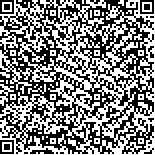| 引用本文: | 王开正,付一桐,钱国超,等.基于时空上下文的输电线路山火自动识别算法[J].电力系统保护与控制,2022,50(18):83-91.[点击复制] |
| WANG Kaizheng,FU Yitong,QIAN Guochao,et al.An automatic identification algorithm for wildfire occurrences near transmissionline corridors based on spatio-temporal context[J].Power System Protection and Control,2022,50(18):83-91[点击复制] |
|
| 本文已被:浏览 5120次 下载 1395次 |

码上扫一扫! |
| 基于时空上下文的输电线路山火自动识别算法 |
| 王开正,付一桐,钱国超,周仿荣,文刚,李露露,单节杉,王飞鹏,李剑 |
|
|
| (1.昆明理工大学电力工程学院,云南 昆明 605504;2.云南电网有限责任公司电力科学研究院,
云南 昆明 650217;3.输配电装备及系统安全与新技术国家重点实验室,重庆 430074) |
|
| 摘要: |
| 传统极轨卫星观测频次低和观测时间固定,难以对一个区域进行实时监测。因此,基于Himawari-8 (H-8)静止卫星提出了一种能持续监测输电线路山火的时空上下文火点自动识别算法。该算法首先根据中红外和热红外波段对火点的敏感度差异,采用固定阈值法快速实现绝对火点识别和潜在火点提取,然后在空间上利用中红外和热红外的通道值、平均值和标准差之间的比值关系对潜在火点进行细判。在时间上利用H-8的高观测频次并融合火点发生概率进行持续性火点识别。所提技术已应用于南方某省级电网输电线路山火监测,并且准确率达72.5%,漏报率为43.9%。监测结果明显优于固定阈值法与传统的上下文法。 |
| 关键词: Himawari-8 输电线路山火 时空上下文 阈值 潜在火点 |
| DOI:DOI: 10.19783/j.cnki.pspc.211593 |
| 投稿时间:2021-11-25修订日期:2022-02-10 |
| 基金项目:国家自然科学基金项目资助(52107017,52177016,52130707) |
|
| An automatic identification algorithm for wildfire occurrences near transmissionline corridors based on spatio-temporal context |
| WANG Kaizheng,FU Yitong,QIAN Guochao,ZHOU Fangrong,WEN Gang,LI Lulu
SHAN Jieshan,SHAN Jieshan,WANG Feipeng,LI Jian |
| (1. Faculty of Electric Power Engineering, Kunming University of Science and Technology, Kunming 605504, China;
2. Electric Power Research Institute of Yunnan Electric Power Company, Kunming 650217, China; 3. State Key
Laboratory of Power Transmission Equipment & System Security and New Technology, Chongqing 430074, China) |
| Abstract: |
| The traditional polar-orbit satellite with low-frequency observations and a fixed observation time is intractable to real-time monitoring for a specific region. Accordingly, a spatio-temporal contextual algorithm for continuous monitoring of wildfires near transmission lines is provided by the Himawari-8 (H-8) geostationary satellite. First, based on the difference in sensitivity of the mid-infrared and thermal infrared bands to the fire spots, the absolute and potential fire spots are determined by a fixed-threshold algorithm. Then, the flame pixels are identified by comparing the ratios between the channel value, mean, and standard deviation of the mid-infrared and thermal infrared from space. Also, persistent fire spots can be located by taking advantage of the high-frequency observation capability of H-8 in conjunction with the fire occurrence probability in terms of time. The proposed technique has been applied to the wildfire monitoring of transmission lines in a provincial power grid in southern China, boosting the accuracy rate to 72.5% and lowering the missing alarm rate to 43.9%, respectively. The current study results are significantly superior to the conventional contextual fire detection algorithm and fixed threshold algorithm.
This work is supported by the National Natural Science Foundation of China (No. 52107017, No. 52177016, and No. 52130707). |
| Key words: Himawari-8 wildfire near transmission lines spatio-temporal contextual threshold potential fire spot |